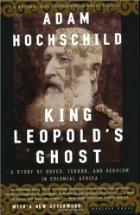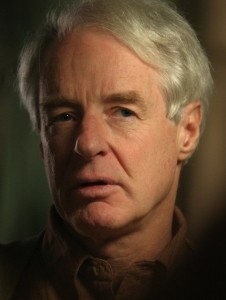[This third installment in a four-part series on writing historical narratives focuses on the importance of characters. The series is based on a lecture given by Adam Hochschild at Vanderbilt University in February 2011. Prior installments have included a look at the value of setting and scenes in nonfiction storytelling and a call to bridge the divide between academic writing and narratives intended for the general public. ]
The next key ingredient in the trio I mentioned is character. Telling history through a set of characters is by no means the only way to do it, but it’s certainly a powerful one. What works for me is finding a network of characters who, in one way or another, are connected to each other, and trying to evoke a period of history or a story of something such as the anti-slavery movement through that networked group of characters. I think that’s a powerful form of storytelling because, here again, life itself unfolds this way. Each of us is at the center of such a network. A variety of people have connections to each of us, and many of them have intricate connections with each other.
Of course, playwrights, novelists, and screenwriters tell their stories in the same way. It’s never a succession of characters who have no connection to each other that we meet in a movie or play or novel. They’re members of the same family, or they’re friends, or they fall in or out of love, or they’re rivals.
 So I always go looking for such characters, for some way of finding a web of people through which I can tell a story. My book “King Leopold’s Ghost” was about King Leopold II of Belgium and his conquest of the Congo, the brutal system of forced labor that he imposed there, and the extraordinary opposition to this system that created the first international human rights campaign of the 20th century.
So I always go looking for such characters, for some way of finding a web of people through which I can tell a story. My book “King Leopold’s Ghost” was about King Leopold II of Belgium and his conquest of the Congo, the brutal system of forced labor that he imposed there, and the extraordinary opposition to this system that created the first international human rights campaign of the 20th century.
As soon as I began looking into this story, I felt that a marvelous web of interconnected characters had been handed to me on a platter. There was King Leopold himself, who was God’s gift to a writer. He was extremely greedy, shrewd, brilliant, charming, devious, and just as evil in his personal life as in his political life. (He was not on speaking terms with two of his three daughters, and cheated on his wife with a succession of teenage girls.) It’s great if you can find people like that. Then he had these opponents, Edmund D. Morel, a muckraking British journalist, who went after him for 10 years, trying to expose what he was doing. Roger Casement, an Irishman in the British consular service, wrote a very important report outlining how King Leopold’s system worked. George Washington Williams, a black American journalist, was the first person to blow the whistle on what Leopold was doing in the Congo. And, as a steamboat officer on the Congo River, who comes sailing into the middle of the story but Joseph Conrad.
You could not make up characters who were as interesting as these real people – and you also couldn’t have arranged the relationships between them, which were ideal for my purposes as a storyteller. Morel and Casement saw each other many times, and each of them left a written record of the first time they met. Casement met King Leopold, Leopold sent somebody to try – unsuccessfully – to bribe Morel to shut up. Casement and Joseph Conrad were housemates in the Congo. George Washington Williams met King Leopold. He didn’t meet Joseph Conrad on the Congo, but their steamboats crossed paths on the Congo River, and we can figure out from shipping schedules exactly what day it was. I’m always looking for a web of characters like that.
In the book I’ve just finished on the First World War, what I was trying to do was to retell the story of this war, not in conventional historical terms of a fight between one side and the other, but rather in terms of a struggle between people who thought it was noble and necessary and people who thought it was absolute madness and refused to fight. I wanted to get examples of both these types of persons into the book – the war resisters on the one hand, and, on the other, the generals, cabinet ministers and so forth who orchestrated the fighting.
For the longest time, I couldn’t figure out how to get both these different types into the book. As I said, I don’t like to do a series of disconnected portraits of people. And then I suddenly got a clue. One day I was reading a very boringly written scholarly article about a well-known British woman pacifist named Charlotte Despard, an ardent opponent of the war. She wrote a best-selling anti-war pamphlet and traveled the British Isles throughout the war speaking against it. Before the war, she had been very active in the militant wing of the movement for women’s suffrage and had gone to jail four times for that cause. An ardent advocate of Irish independence, after the war she became a founder of the British communist party. She was involved in every radical cause of the day.
In one sentence in this article, the writer said, “Of course her activities were deeply distressing to her brother.” And it gave his name – Sir John French – which I recognized. He was commander in chief on the Western Front! So I thought, “OK, this is going to be an interesting relationship.” I immediately knew both of these people were well-known enough that there would be abundant documentary sources.
Even though there are two biographies of Despard and at least four of French, none of the biographers, amazingly, were interested in this brother-sister relationship. Despard’s biographers were feminists; French’s biographers were military historians. I think each set was a bit embarrassed by the fact that the sibling was of a very different sort. They were not interested in their relationship at all, but that’s what interested me. Then I realized that this would be the perfect way to tell the story of the war in the way that I wanted. I began to look for other such divided families, families where there was one brother was at the front and one in prison as a war resister, or something like that. I found three such families or family-and-friends groups who form the human networks at the core of the story. There are some other people who come into the story, but I bring them in only because they have a connection to one person or another in these three central family groups.
Again, I have that feeling that one sometimes has when writing or reading history, that this is more interesting, more colorful, more unexpected, than any novelist could possibly invent. History just gives us these people, and it’s for us to make use of them.
One of my favorite characters, for example, is a Scotsman named John S. Clarke, who grew up in a circus family. At the age of 17, he became the youngest lion-tamer in Great Britain. He worked in the circus for some years, then became involved in radical politics. He ran guns to revolutionaries in Russia. He was vigorously opposed to Britain taking part in the First World War.
A friendly policeman tipped him off that he was about to be arrested. He went underground, all the while publishing an anti-war Socialist newspaper. Throughout the the war it was printed secretly. The police were never able to shut it down. Finally he surfaced again, when it was safe to come up, in 1920 or so. He later became a Labour member of Parliament and ended his life spending a decade on the Glasgow City Council. And when he needed some extra money or got bored, and there was a circus in town, he went back into the ring – and was the oldest lion tamer in Great Britain.
You couldn’t make up someone like this. Or if you were a novelist, and did make up someone like this, people wouldn’t believe you. But this fellow was real, and I have a picture of him in the book with his arm around a tiger.
A former editor of Mother Jones magazine, Adam Hochschild has written several nonfiction books, including “Bury the Chains” and “King Leopold’s Ghost.” His next, “To End All Wars: A Story of Loyalty and Rebellion, 1914-1918,” will be published in May. Read part 1 of Hochschild’s talk, on the divide in writing about history for academic and lay audiences, and part 2, on using setting and scenes in nonfiction storytelling. Or skip to the final installment, which covers the importance of plot in historical narrative. (Or watch the hour-long video in its entirety.)


